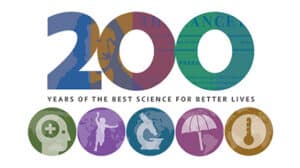Urges US Congress to avoid complacency and resume funding to combat the virus
America’s top infectious disease expert Dr Anthony Fauci has warned against prematurely declaring victory over Covid-19 pandemic. He says long COVID represents an “insidious” public health emergency for millions of people.”
In an interview with the Guardian, Fauci urged US Congress to avoid complacency and resume funding to combat the virus as well as Long COVID, a chronic and prolonged illness that continues to elude scientists and healthcare providers.
“It’s a very insidious beneath-the-radar-screen public health emergency,” Fauci said. “It isn’t that you have people who are hospitalized or dying, but their function is being considerably impaired. For reasons that are obvious, that doesn’t attract as much attention as a death rate.”
Fauci said the cold fact that COVID-19 still kills 400 people a day in the US catches public attention more acutely than estimates of the millions suffering from long COVID. “People say, well, what does that mean? It’s not very concrete. And yet for the individual patient, it could be debilitating.”
People with Long COVID have disease symptoms that persist for weeks or months after acute COVID-19 infection. It remains difficult to measure precisely, but an estimated 7.7 to 23 million Americans have developed Long COVID, and roughly one million people may be out of the workforce at any given time due to the condition—equivalent to about $50 billion in lost earnings annually, a report released by US Department of Health and Human Services early in August this year said
Though the US government has taken steps to support long COVID patients as the Departments of Justice and Health and Human Services (HHS) issued guidance stating that the condition can be a disability under the Americans with Disabilities Act of 1990, Fauci urges Washington to resist any sense of mission accomplished. “We’ve hit a wall when it comes to further resources for Covid, including long Covid. There doesn’t appear to be a lot of resources that are waiting for us right now.”
Some long COVID patients may qualify for Social Security Disability Insurance (SSDI) if they meet certain requirements. The CDC has developed long COVID guidance for health care providers and the public. Another HHS agency, the Administration for Community Living, published a guide to community-based resources to help connect affected people to services like transportation and personal care attendants.
On August 3, 2022, the US Department of Health and Human Services released 2 major reports in response to a presidential memo calling for a whole-of-government response to the SARS-CoV-2 sequelae known as “Long COVID.”
Talking to JAMA Editor in Chief Kirsten Bibbins-Domingo, Assistant Secretary for Health in US Department of Health and Human Services, Rachel L. Levine said the take home message is that Long COVID is real. “Estimates vary, but anywhere between 7.7 to 23 million Americans have developed Long COVID, and roughly 1 million people out of the workforce at any given time due to long COVID,” Dr Levine said.
Admiral Rachel Levine, who is a physician and a paediatrician, while offering his viewpoint on the reports, said, “the first report is on the services and supports for longer-term impacts of COVID-19. This outlines federally funded support and services for individuals experiencing the longer-term effects of COVID-19 in the areas of Long COVID and associated conditions, but also mental health and substance use as well as bereavement. The second report is the National Research Action Plan on Long Covid, the research plan. And this proposes a comprehensive and equitable research strategy to inform our national response to Long Covid.”
In his interview, Admiral Levine described long COVID as “signs, symptoms and conditions that continue or develop after a COVID-19 or SARS-CoV-2 infection.”
“The signs, symptoms and conditions are present for four weeks or more after the initial phase of the infection. They may be multi systemic, and may present a relapsing, remitting pattern and progression or worsening over time, with the possibility of severe and life-threatening events even months or years after infection. Long COVID is not necessarily one condition. It represents many potentially overlapping entities, likely with different biological causes and different sets of risk factors and outcomes,” he said.
Long COVID, according to the Centers for Disease Control and Prevention (CDC), is the occurrence of new, returning, or ongoing health problems 4 or more weeks after an initial infection with SARS-CoV-2, the virus that causes COVID-19. It is also known by other names, including post-acute COVID, post-COVID conditions, and chronic COVID.
Symptoms of long COVID vary from person to person. They may include fatigue, cognitive impairment (or “brain fog”), muscle or joint pain, shortness of breath, heart palpitations, sleep difficulties, and mood changes. Long COVID can affect multiple organ systems and cause tissue damage.
The World Health Organization believes that between 10 percent and 20 percent of COVID-19 survivors have been left with lasting symptoms including breathlessness, fatigue and cognitive dysfunction that can persist long after the acute infection has resolved.
Fauci said: “We don’t know what the mechanisms of brain fog are. How come someone who is very sharp intellectually and very energetic all of a sudden can’t concentrate for more than half an hour on anything? And how come people who are polished athletes no longer have any exercise tolerance?”
“These are all mysteries that we hope will unfold and uncover sometime in the reasonably near future, but there are more unanswered questions than there are answered questions. You don’t really know what to do about something until you know what the lesion is, and we don’t know what the lesion is yet. That’s the problem,” he added.

















